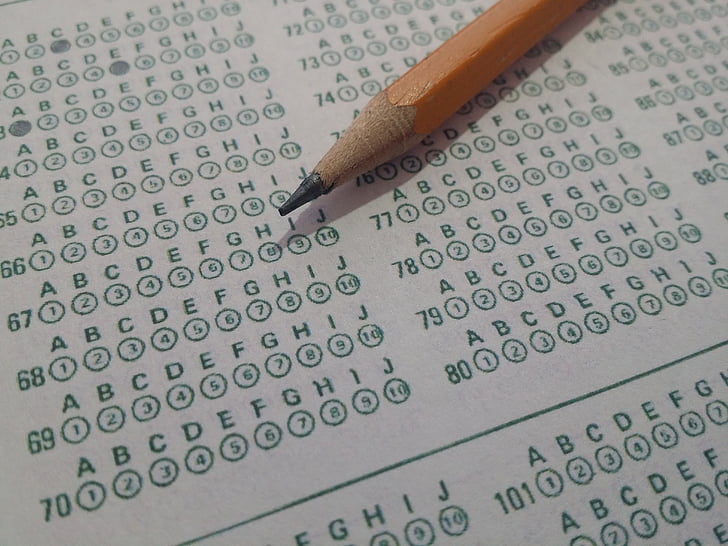Hell!o!
My name’s Julien Holmgren, I’ve been an English trainer for four years and I have always enjoyed working on difficult things like the TOEIC test.
Therefore, I decided last year to set up my own language school teaching TOEIC preparation classes. I focus entirely on this – it’s all I do.
In Today’s blog, I’m going to walk you through the intricacies of this well-known test so that your students get a better score.
Whats the TOEIC test anyway?
The TOEIC® Listening and Reading test has become a standard for decision makers worldwide. The test measures beginner to advanced English Listening and Reading comprehension skills and determine if someone studying English as a foreign language can communicate effectively and proficiently in English, across borders and cultures with co-workers and clients.
Who does TOEIC?
Many students have to take this test during their studies in order to validate their degree; 14,000 engineer schools in France rely on this test and many students come from there with an objective of 785/990 (B2 level) or more (sometimes 900 but it is rare).
Students who attend a business school also need to take this test, as well as future airline pilots or university students trying to get into a master’s degree.
On rare occasions, employees who have been working for years at a company need to take this test because their position has evolved and they might, in the future, need to work with English-speaking customers or collaborators.
What are examiners looking for?
This test consists of two sections: Listening and Reading. The test taker answers multiple-choice questions (MCQs) within the allotted time. The type of questions is the same whether the test is administered online or in print format, or is linear (2 hours) or adaptive (1 hour).
The Listening section
The Listening section assesses the level of proficiency in understanding spoken English. It consists of four parts. You will be asked to answer questions based on a variety of statements, questions, short conversations and short recorded speeches in English.
- Part 1: Photographs
- Part 2: Questions and Answers
- Part 3: Conversations
- Part 4: Presentations / Announcements
The Reading Comprehension
The Reading section comprises three parts to assess your level of understanding of written English. You will read different documents and answer questions related to the content of these documents.
- Part 5: Incomplete Sentences
- Part 6: Complete Texts
- Part 7: Reading of various content
What are some of the traps to look out for?
There are many traps throughout the test and you will need to know them. The good news is, they are always the same and one can develop a sort of sixth sense when it comes to doing the test.
Part 2 has four traps, one of them being the use of the wrong pronoun in one or two of the answers you can choose from (out of three).
eg: Do you go to work by bike?
-Yes, she likes cycling.
It is easy to identify a wrong pronoun and, therefore, eliminate this answer. Don’t forget that, for students, it is sometimes easier to spot wrong answers than finding the right one, but they can achieve this through elimination. Most of the time, two answers out of three can be eliminated using this process when the four traps are known.
Another trap in this part is what I call a grammar paradox:
eg: Did you go to the museum last weekend?
Yes, I’ll go to the museum soon.
In part 4, a wrong answer, written in the booklet as one of the possible answers, is often said five seconds before the right one. This trap aims to « catch the listener’s attention » who will answer the first thing they hear, as it is actually written in the booklet. However, it is often the wrong answer and they should not choose this answer just because they hear it.
You need to show them that the correct answer was right behind the wrong one and repeat the process until they get it. Eventually, they will be careful and learn how not to fall into this trap. Of course, it doesn’t work all the time and, sometimes, the first thing they hear is the correct answer. None of the traps work 100% of the time and they need to sort the different information before choosing an answer.
There are plenty of other traps….
How to teach a TOEIC course (basics here!)
I advise working with an e-learning platform that will give you access to 240 exercices and different functions. I used to work with a book of which I had scanned the pages but this is obsolete nowadays and learners expect something more modern.
For my learners, I use a Global exam licence and work on it sharing my screen or theirs (for the listening parts I like to use the mouse of the computer so I can play the audio files again at my leisure).
The method is quite straightforward; go through each part of the test from 1 to 7 and do each question with them, providing your tips and explanations if need be. Doing this should take you between ten and thirteen hours depending on the learner. If the whole training course only lasts ten hours, which is often the case (students who do not have CPF funds are on a tight budget and they hesitate to throw a lot of money at a random trainer who sits behind a screen), you will only have time to go through the entire test once and will have to prioritize.
You will find out that there are some parts you prefer; for me, that’s part 5 (grammar) and I do believe it is quite easy to help your students here because grammar can easily be explained.
Indeed, if they don’t know what a third conditional is, or even worse a third conditional without the word « if » in the clause, just explain it, provide some examples, throw in a video from mmmEnglish on You Tube and that’s it.
Whereas this is easy to do so, you can’t make them understand spoken English better if you only spend ten hours with them. Do choose a part you enjoy more than the rest and spend more time on it if you believe it will benefit the student.
Some trainers like to spend more time on part 7, which is understandable because it represents one fourth of the whole test and takes up to 50 minutes to do (many students do not have time to finish that part so they need to do parts 5 and 6 rather quickly eg 22 minutes; work on that aspect, time them while they do it).
Even though I understand why some trainers do that, I don’t spend much time on this part. Why? Because there aren’t many traps there and your input won’t really be valuable. You will basically look at them while they answer this part and won’t do much. I believe it is better to spend more time on grammar, especially if the course only lasts ten hours.
Should students start the reading part with part 7 and then do parts 5 and 6? Some trainers think so but I don’t; they will have to do all the parts anyway so what good does it do to change the order? They will have to turn the pages of the booklet multiple times and it is time-consuming. I’d rather have them do the test in the right order but keep in mind you can use this method if you think it is worth it.
Do students have to prepare to take this test?
Yes, they definitely should. I’ve seen English trainers giving wrong answers because they got trapped or didn’t know the structure well. Also, the logic one needs to have for this test is not always, well, logic.
Folks who come up with the test sessions sometimes have a twisted mind and provide us with dialogues that sound like they’re trying their best not to be understood, like when you play this game where you try not to say yes or no when answering questions.
The result makes for bizarre sentences or conversations that do not sound realistic and it is entirely possible to understand the whole conversation and still not know which answer to choose!
That’s why it is absolutely necessary to prepare for this test because students need to be told about this and they need to experience it beforehand so they don’t fail when they take the test. Don’t forget that the test costs 132 euros and I have seen students who had taken it up to eight times before contacting me, spending a lot of money uselessly before contacting a trainer who specializes in Toeic. Most of the time, they reached their objective.
On a side note, I know many English trainers do not think they should take the test themselves. I took it twice myself, scoring 990 in 2017 and 960 in 2021 in order to make sure I know what I’m talking about and can provide proof of that. There’s no reason for a certified English trainer to fail the test but you could be surprised.
After all, when you take driving lessons, you do expect the trainer to have their driving license, right?
I don’t expect you to go through the 240 exercices before your start your lessons; therefore, most of the time you will discover today’s exercices with your students; make sure you get the answer right in order not to look embarrassed. Also, you can do the same exercices again and again and know them by heart but you will soon bore yourself to death.
How I can help you get your students through the exam…
As a certified English trainer with a TEFL certification, I specialize in teaching Toeic and can help students get through this essential test.
As I have taken the test myself, I know it very well and know where the traps are; knowing these, plus working on grammar is they key to success.
Julien Holmgren
Find me at www.reussite-toeic.fr


